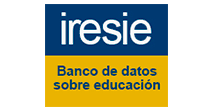EDUCAÇÃO ALIMENTAR NA ESCOLA POR UMA ABORDAGEM INTEGRADORA NAS AULAS DE CIÊNCIAS
DOI:
https://doi.org/10.5216/ia.v37i2.14644Palavras-chave:
Ensino de ciências. Educação alimentar. Abordagem integradora.Resumo
Este artigo tem como foco a educação alimentar na escola. Através de entrevista, investigamos a(s) prática(s) educativa(s) relativa(s) ao tema, assumida(s) no discurso de professoras de ciências. Observamos que: (i) a alimentação é percebida como individual e biológico-nutricional, dissociada dos fatores socioeconômico-culturais; (ii) o livro didático (LD) aparece como referência na preparação das aulas; (iii) mesmo parecendo não compreenderem a alimentação como multideterminada, elas destacam a necessidade de um trabalho integrado; e (iv) a não realização desse trabalho é justificada pela falta de formação para fazê-lo, pelo extenso programa a ser seguido. Diante da necessidade da abordagem integradora para alimentação, devemos analisar as possibilidades de (re)orientar as ações pedagógicas no sentido de abrir espaço para expressão e negociação de significados, podendo o LD apresentar sugestões de atividades e questões sociocientíficas que favoreçam essas possibilidades.Downloads
Downloads
Publicado
Como Citar
Edição
Seção
Licença
A Inter-Ação utiliza como base para transferência de direitos a licença Creative Commons Attribution 4.0 para periódicos de acesso aberto (Open Archives Iniciative - OAI). Por acesso aberto entende-se a disponibilização gratuita na Internet, para que os usuários possam ler, baixar, copiar, distribuir, imprimir, pesquisar ou referenciar o texto integral dos documentos, processá-los para indexação, utilizá-los como dados de entrada de programas para softwares, ou usá-los para qualquer outro propósito legal, sem barreira financeira, legal ou técnica.
Autores que publicam neste periódico concordam com os seguintes termos:
1) Autores mantém os direitos autorais e concedem à revista o direito de primeira publicação, com o trabalho simultaneamente licenciado sob a Licença Creative Commons Attribution que permite o compartilhamento do trabalho com reconhecimento da autoria e publicação inicial nesta revista.
2) Autores têm autorização para assumir contratos adicionais separadamente, para distribuição não-exclusiva da versão do trabalho publicada nesta revista (ex.: publicar em repositório institucional ou como capítulo de livro), com reconhecimento de autoria e publicação inicial nesta revista.
3) Autores têm permissão e são estimulados a publicar e distribuir seu trabalho online (ex.: em repositórios institucionais ou na sua página pessoal) a qualquer ponto antes ou durante o processo editorial, já que isso pode gerar alterações produtivas, bem como aumentar o impacto e a citação do trabalho publicado.















